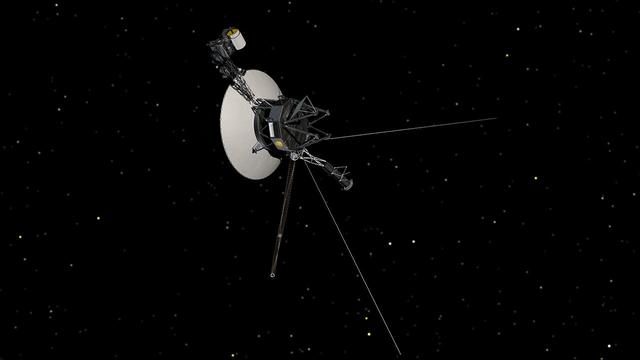After an unanticipated lapse in connection, NASA’s Voyager 2 probe, a stalwart of interstellar exploration, has successfully reestablished contact with Earth in a turn of events that has the potential to have a dramatic impact. The encouraging “heartbeat” signal that the probe gave to mission control in 1977 rekindled hopes of continuous communication and data transmission. The probe had been launched in 1977 with the objective to study the outer planets and spread a message of humanity’s presence throughout the cosmos.
The drama began when a sequence of standard orders were transmitted to the Voyager 2 spacecraft on July 21. These commands mistakenly triggered the antenna of the spacecraft to deviate by two degrees from its orientation orientated toward Earth. Because of this misalignment, the probe is unable to communicate data or receive instructions from mission control. As a result, the probe is unable to complete its mission. It was predicted that the situation would continue until October 15, at which point an automated reorientation maneuver would be carried out.
In spite of this, there was a ray of hope as NASA experts began a last-ditch effort to reactivate the dormant link. The group made an effort to get back in contact with the far-off probe by utilizing the resources of the Deep Space Network. This network is comprised of huge radio antennas that are stationed all over the world, as well as others that are orbiting the Earth. They could not believe that their brazen attempt had actually been successful. The manager of the Voyager project, Suzanne Dodd, stated unequivocally that “this was successful in that we see the ‘heartbeat’ signal from the spacecraft.” Therefore, we are aware that the spacecraft is alive and functioning. Our spirits were lifted as a result of this.
Even though the “heartbeat” signal has been resurrected, which indicates that Voyager 2 is functioning, there is still a barrier that prevents full communication from being restored. Although engineers are able to detect the carrier wave that is linked with the probe, which is analogous to the rhythm of the heartbeat, they are not yet able to decipher the information signal that is carried by the spacecraft and contains the data that it has acquired. The crew seems unfazed by the difficulties that are sure to arise when they move on with their plans to turn the antenna on Voyager 2 so that it points towards Earth.
The resiliency and persistence with which Voyager 2 overcame this communication obstacle are illustrative of its long and illustrious history of accomplishments. In December of 2018, the probe left the heliosphere, which is the protective magnetic bubble that surrounds the sun and is known as the heliosphere, and began its trip across interstellar space. Before this major achievement, Voyager 2 had already undertaken ground-breaking explorations of Jupiter and Saturn, and it is still the only spacecraft that has ever been to Uranus and Neptune. This makes it a one-of-a-kind spacecraft.
Another historic first was accomplished by its sibling, Voyager 1, in the year 2012, when it became the first object created by humans to travel across the interstellar medium. Voyager 1 is currently situated at a distance of approximately 24 billion kilometers (15 billion miles) away from Earth as it continues its journey beyond the solar system.
Both of the Voyager spacecraft are equipped with priceless “Golden Records,” which are copper disks measuring 12 inches and plated with gold. These disks are intended to communicate the essence of Earth to any future extraterrestrial civilizations. In addition to an eclectic collection of music and noises, the records contain encoded visuals representing life on our planet. This collection was curated by a committee led by the famous astronomer Carl Sagan. The records also include instructions for how to play back the contents of the records.
In spite of the fact that these elderly probes are still transmitting priceless scientific discoveries, it is anticipated that their power sources will run out by the year 2025, so paving the way for a silent drift through the Milky Way. These representatives of humanity will leave an indelible imprint on the annals of space travel as they chart their course across the universe. Voyager 2’s victorious return to “heartbeat” connection serves as a tribute to human ingenuity and the unyielding spirit of exploration that motivates us to seek beyond the stars. This achievement comes at a time when technical wonders and galactic dreams are at the forefront of our culture.
![]()
